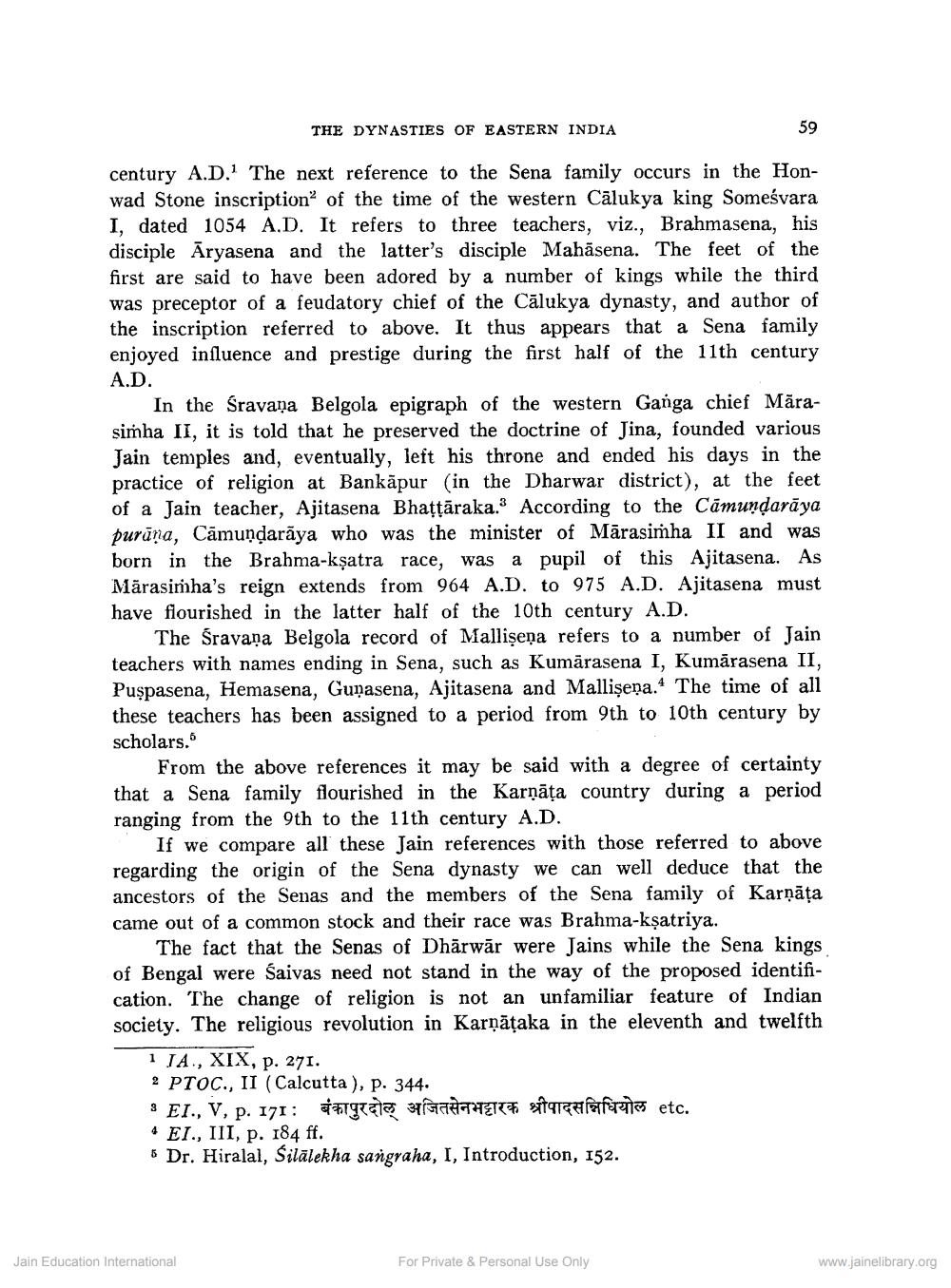________________
THE DYNASTIES OF EASTERN INDIA
59
century A.D. The next reference to the Sena family occurs in the Honwad Stone inscription" of the time of the western Calukya king Someśvara I, dated 1054 A.D. It refers to three teachers, viz., Brahmasena, his disciple Āryasena and the latter's disciple Mahāsena. The feet of the first are said to have been adored by a number of kings while the third was preceptor of a feudatory chief of the Cālukya dynasty, and author of the inscription referred to above. It thus appears that a Sena family enjoyed influence and prestige during the first half of the 11th century A.D.
In the Sravana Belgola epigraph of the western Ganga chief Mārasimha II, it is told that he preserved the doctrine of Jina, founded various Jain temples and, eventually, left his throne and ended his days in the practice of religion at Bankāpur (in the Dharwar district), at the feet of a Jain teacher, Ajitasena Bhațţāraka. According to the Cāmundarāya purāna, Cāmundarāya who was the minister of Mārasimha II and was born in the Brahma-kșatra race, was a pupil of this Ajitasena. As Mārasimha's reign extends from 964 A.D. to 975 A.D. Ajitasena must have flourished in the latter half of the 10th century A.D.
The Sravana Belgola record of Mallişeņa refers to a number of Jain teachers with names ending in Sena, such as Kumārasena I, Kumārasena II, Puspasena, Hemasena, Gunasena, Ajitasena and Mallişeņa. The time of all these teachers has been assigned to a period from 9th to 10th century by scholars.
From the above references it may be said with a degree of certainty that a Sena family flourished in the Karnāța country during a period ranging from the 9th to the 11th century A.D.
If we compare all these Jain references with those referred to above regarding the origin of the Sena dynasty we can well deduce that the ancestors of the Senas and the members of the Sena family of Karņāța came out of a common stock and their race was Brahma-ksatriya.
The fact that the Senas of Dhārwār were Jains while the Sena kings of Bengal were Saivas need not stand in the way of the proposed identification. The change of religion is not an unfamiliar feature of Indian society. The religious revolution in Karnātaka in the eleventh and twelfth
1 TA., XIX, p. 271. 2 PTOC., II (Calcutta), p. 344. : EI., V, p. 171: greta ARTETETT stargarafaretas etc. * EI., III, p. 184 ff. • Dr. Hiralal, Silālekha sangraha, I, Introduction, 152.
Jain Education International
For Private & Personal Use Only
www.jainelibrary.org




